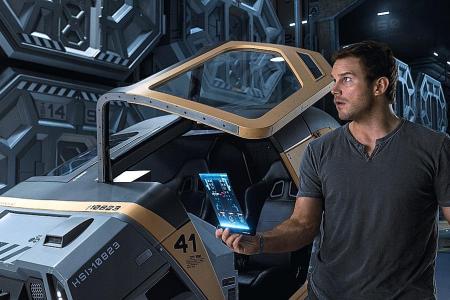Sleeping among the stars
Hibernation for deep space travel, once only seen in films, is now being explored
From Aliens to Interstellar, Hollywood has long been using suspended animation to overcome the difficulties of deep space travel. But the once-fanciful sci-fi staple is becoming scientific fact.
The theory is that a hibernating crew could stay alive over vast cosmic distances requiring little food or hydration, potentially slashing the costs of interstellar missions.
But the technology has been unattainable outside the fertile imaginations of film-makers such as James Cameron and Christopher Nolan - until now.
Atlanta-based Spaceworks Enterprises is using a US$500,000 (S$723,000) grant from the National Aeronautics and Space Administration (Nasa) to leverage techniques used on brain trauma and heart attack patients to develop "low metabolic stasis" for missions to Mars and the asteroid belt.
"It takes about six months to get out to Mars... There are a lot of demands, a lot of support equipment required to keep people alive even during that period," said its chief executive officer, Mr John Bradford.
The aerospace engineer told a panel in Los Angeles marking the release of Passengers, the latest movie to explore suspended animation, that his company was adapting the medical technique of induced hypothermia to astronautics.
It takes about six months to get out to Mars... There are a lot of demands, a lot of support equipment required to keep people alive even during that period.SpaceWorks chief executive officer John Bradford
Hospitals lower the core temperature of trauma patients by around 12 deg C to achieve a 70 per cent reduction in metabolism, although they are "shut down" for a couple of days rather than the months astronauts would need.
Passengers, now showing in cinemas, stars Chris Pratt and Jennifer Lawrence on a 120-year journey to a distant colony when their hibernation pods wake them 90 years too early.
AFFORDABLE
While the research being done by SpaceWorks could make 180-day journeys to Mars much more affordable, the technology is not yet capable of extending human life to allow for the thousands of years required to reach our next nearest star.
Even at the relatively small Mars-like distances, "induced torpor" is not without its challenges, said Mr Bradford, especially on short missions where astronauts have little time to recover after being woken from stasis.
He said: "You're going to be tired. In this process, you're not really sleeping - your body doesn't enter a (rapid eye movement) state.
"If we look at animal hibernators, they actually come out of hibernation to sleep and then go back into hibernation."
Passengers screenwriter Jon Spaihts said he found himself running into tensions between the dramatic requirements of the movie and "hard science" when it came to designing his hibernation pods.
Neither induced torpor nor any of its most realistic alternatives are "states in which Sleeping Beauty in her bed would look particularly gorgeous", he said.
The idea of finding a sufficiently Earth-like planet or moon in the sterile vastness of space is another problem on which science has made giant progress in recent years.
Before 1989, humanity was aware of just nine planets in the universe - those orbiting our own sun. But scientists have since identified some 3,545 "exoplanets" in 2,660 solar systems.
"To have kids wake up these days and think there are thousands and thousands of planets out there, that's a crazy thing to grow up with - knowing there's probably life on these distant worlds," said weather specialist at Nasa's Jet Propulsion Laboratory, Tiffany Kataria.
So what are the odds of finding a planet with the right atmosphere, and roughly the same gravity and protection from radiation - a real-life version of the distant colony depicted in Passengers?
"We simply don't know. It must be out there," said Ms Kataria. - AFP
Get The New Paper on your phone with the free TNP app. Download from the Apple App Store or Google Play Store now



